Pulse Oximeters
Never Skip a Beat with High-Precision Pulse Oximeters
The blood oxygen levels can narrate a lot of things about your body. For example, people who have issues like lung cancer, asthma, anaemia, and cardiovascular diseases need to check their blood oxygen levels on a daily basis to take necessary actions. An effective and harmless device to check blood oxygen levels is a pulse oximeter.
Pulse oximeters measure the oxygen percentage in hemoglobin proteins, called oxygen saturation. In the case of a healthy human being, a pulse oximeter should show a reading between 95 to 100%. Here is more about blood oxygen monitors that you should know before buying one!
Showing all 5 resultsSorted by popularity
-
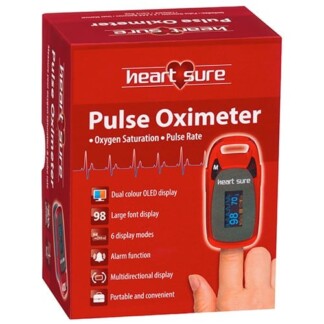 43% OFFSave $40.58
43% OFFSave $40.58Heart Sure Pulse Oximeter A320
Original price was: $94.95.$54.37Current price is: $54.37. Add to cart -
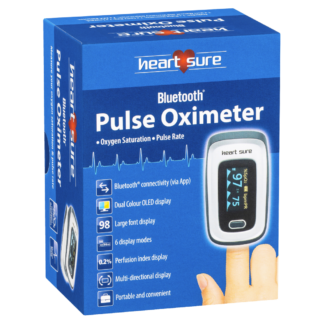 42% OFFSave $41.97
42% OFFSave $41.97Heart Sure Bluetooth Pulse Oximeter A380
Original price was: $99.95.$57.98Current price is: $57.98. Add to cart -
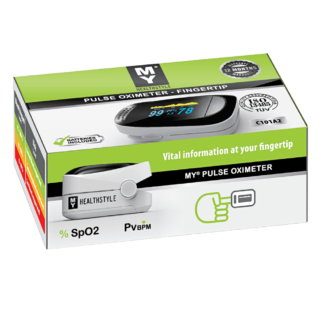 40% OFFSave $24.21
40% OFFSave $24.21MY Healthstyle Pulse Oximeter
Original price was: $59.95.$35.74Current price is: $35.74. Add to cart -
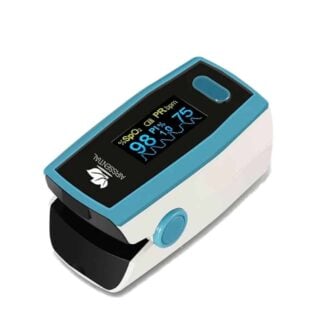 30% OFFSave $19.80
30% OFFSave $19.80Airssential AiroOxy Fingertip Pulse Oximeter
Original price was: $66.00.$46.20Current price is: $46.20. Add to cart -
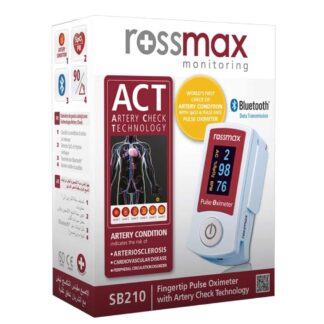 40% OFFSave $75.66Out of stock
40% OFFSave $75.66Out of stockRossmax Fingertip Pulse Oximeter SB210BT
Original price was: $189.95.$114.29Current price is: $114.29. Read more
How do Blood Oxygen Monitors Work?
Before we dive into the question of how blood oxygen monitors work, let’s understand the types of pulse oximeters!
There are five to six types of pulse oximeters!
- Fingertip: These are small, portable devices that clip onto a finger to measure oxygen saturation and pulse rate.
- Handheld: This pulse oximeter device has a probe attached to a handheld unit via a cable.
- Table-top: These blood oxygen monitors are larger units used in hospitals or clinical settings.
- Smartphone: This type of pulse oxygen saturation monitor are apps that use a phone’s hardware to measure oxygen saturation.
- Wearable: These are continuous oxygen saturation monitor devices that can be worn on the wrist, such as a smart band or smartwatch.
- Pediatric: These oximeter devices have smaller sensors and playful designs to keep kids comfortable while measuring their blood oxygen levels.
Working of a Pulse Oximeter!
The working of a pulse oximeter can be explained in a few simple steps!
- The device is attached to a body part, which is usually the fingertip, earlobe, or foot (for infants). Make sure that the area has good blood flow for accurate measurement.
- The oximeter has two light sources: red light and infrared light. These lights pass through the skin and underlying tissues, reaching the blood vessels.
- Here’s what happens! Oxygen-rich blood absorbs infrared light, while oxygen-poor blood absorbs red light. The device detects how much of each type of light is absorbed.
- A sensor on the other side of the clip measures the unabsorbed light that passes through the tissues.
- Using the absorption data with a complex equation, the device calculates the oxygen saturation level as a percentage.
In short, the absorption of light is the basic fundamental behind the oxygen saturation monitor. A value under 90% is considered low and needs medical attention.
How to use a Pulse Oximeter?
When it comes to use a pulse oximeter, there are certain steps that you need to take for accurate reading!
- Remove any makeup material applied to the nails, such as nail polish or false nails.
- Warm your hand properly.
- Before you take the oxygen reading, ensure that you have been resting for five minutes.
- Rest your hand on your chest at the level of your heart & hold it still.
- Switch the pulse oximeter on & place it on your finger. For best results, place it on your middle or index finger.
- The reading takes time to get steady. Keep the pulse oximeter in place for at least one minute or longer if it is changing.
- Record the highest reading once the reading has not changed for 5 seconds.
Note: Be careful to identify which monitor reading is your heart rate and which is your oxygen level.
What can Affect the Reading of a Pulse Oximeter?
There are certain aspects that can hamper the results of a pulse oximeter. Here is a quick list of those aspects!
- Improper positioning of the sensor.
- Size and thickness of the patient’s fingers.
- Heart rhythm disorders, such as arrhythmia or tachycardia.
- Excessive movement
- Hypothermia
- High blood pressure
- Nail polish on the fingers.
How to Pick the Right Blood Oxygen Monitor?
Choosing a good oximeter requires a close analysis of a number of factors!
- Size and fit: Go for an oximeter that fits well on your finger and is comfortable. It should not slip and should be able to grip your finger in a snugly way.
- Ease of use: while choosing an oxygen monitor, look for the one that does not require constant setup and a lot of setup. Pick the on-the-go option, such as a smart band oximeter.
- Accuracy: To ensure that the chosen oximeter shows an accurate reading, repeat the process of using the oximeter twice and note the reading. If it is consistent, the oximeter is probably accurate.
- Display: A bigger display that shows the data clearly in an oxygen monitor is ideal for you.
- Type: There are a number of oximeters available on the market. While it is best to go for a clip-on oxygen monitor and smartwatch, hospitals tend to use adhesive-type oximeters are more common.
Buy the Best Pulse Oximeters from Discount Chemist!
If you want to keep your blood oxygen levels in check, Discount Chemist is the one-stop solution. There are a number of blood oxygen monitors that you can purchase from DC at an affordable price. For the best quality oxygen monitor, you can save up to 50%. Moreover, all the available variants are easy to use and ensure accuracy.
Showing all 5 resultsSorted by popularity
